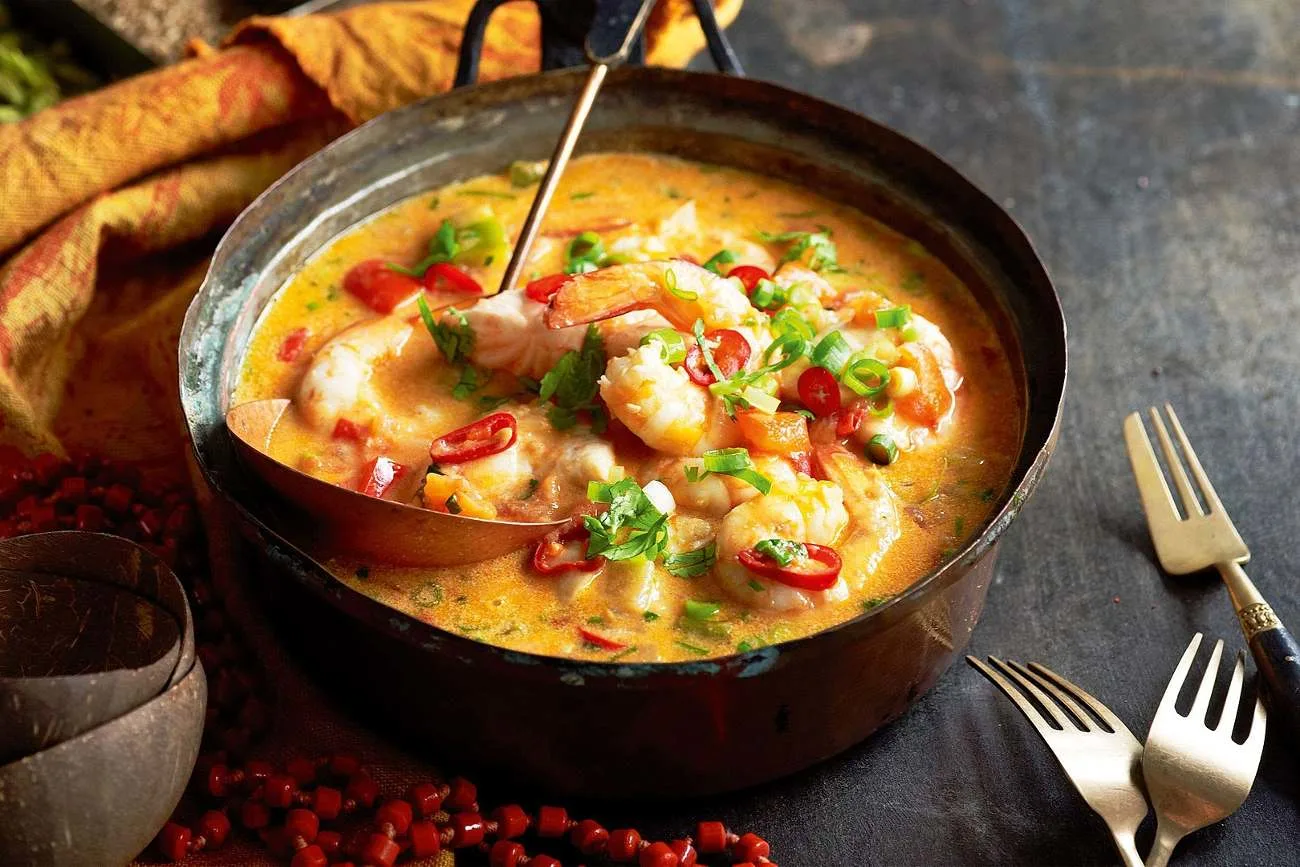What comes to mind when you think about Brazil? Is it the sprawling, unconquerable Amazon forest? Is it the unquenchable love for football or all the dance, music, parades, and elaborate costumes that come with all the merry-making that is the Rio Carnival?
Table of Contents
Most Popular Brazilian Dishes
Brazil has tons to offer, not least its incredible, diverse food. Brazilian cuisine is influenced by many countries or people including Portugal, Asia, Africa and the bordering countries of South America.
It’s no secret that Brazilians love their meat, but we wanted to shine a light on some of the best traditional foods of Brazil which includes plenty of variety and surprises. So without further ado, here are the absolute best traditional dishes of Brazil.
Picanha
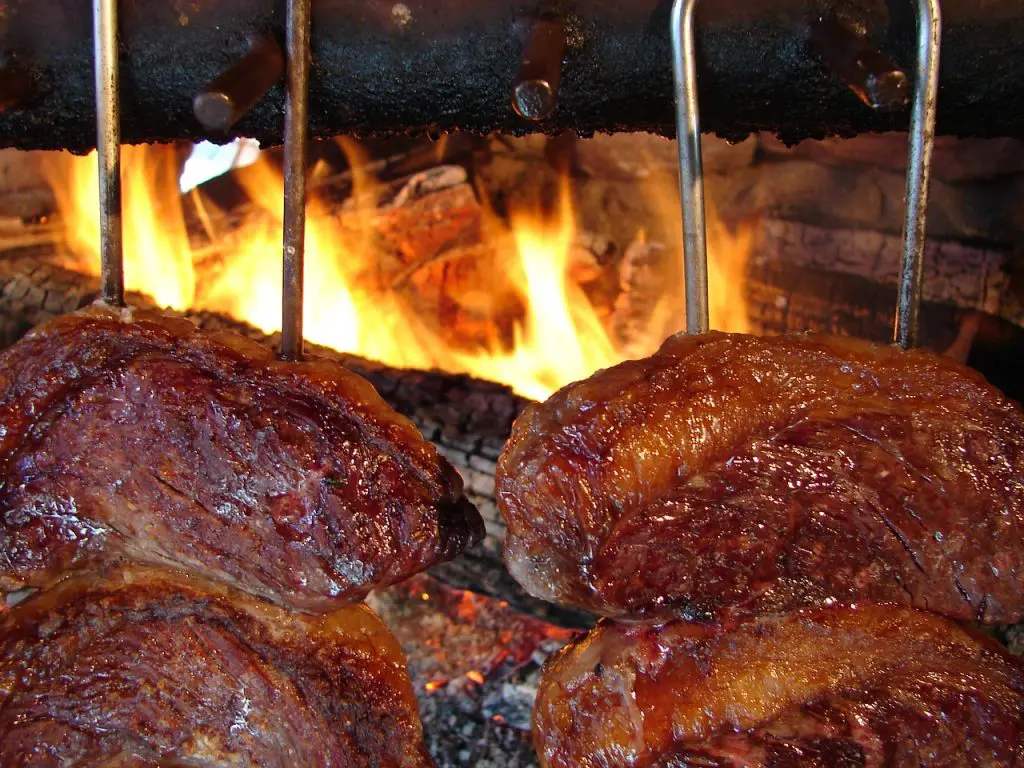
Brazilians pride themselves on their art for barbecued meat. In fact, south Americans as a whole are very well-known for their exquisite meaty dishes.
In Brazil, no edible, barbecue-worthy meat will escape the sizzling fire. The traditional way of barbecuing is with the help of wood. Throw in some sausages, rump cap, chicken hearts, lamb, or even a wild boar and you are in barbeque heaven!
Picanha or rump cap is one of the country’s premium cuts that is loved for barbecuing. Salt is all you need for seasoning and you are good to go! You will get mouth-watering, sizzling hot browned meat on the outside and a melt-in-your-mouth pink middle with all the smoky goodness in between!
Açaí
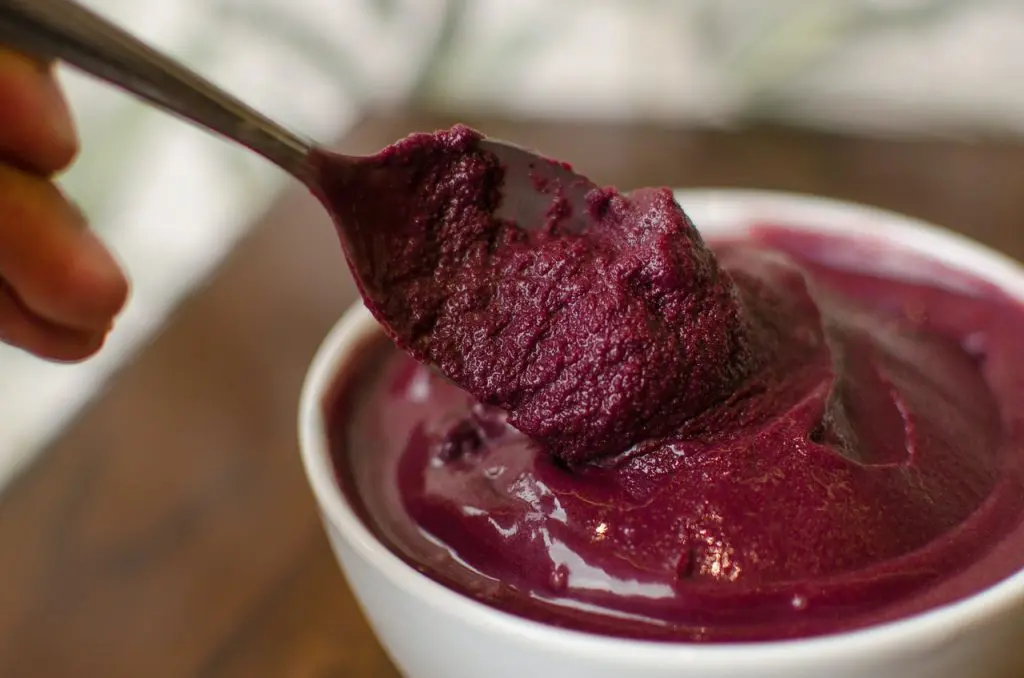
At first sight, you will be forgiven for thinking the acai is an overgrown blueberry. Considered a “superfood”, the Açaí is a fruit harvested from the acai palm.
If you are low on energy and find some Açaí being sold, grab some, and watch your energy levels go up! The indigenous tribes traditionally used this berry as a good source of energy.
It can be consumed as a smoothie, thrown into the stew or served as a frozen sorbet. It can be found in beer, vodka, some bakery goodies, or even in powder form ready to be included in most foods. Açai has a distinct chocolatey, berry flavor.
Pastel
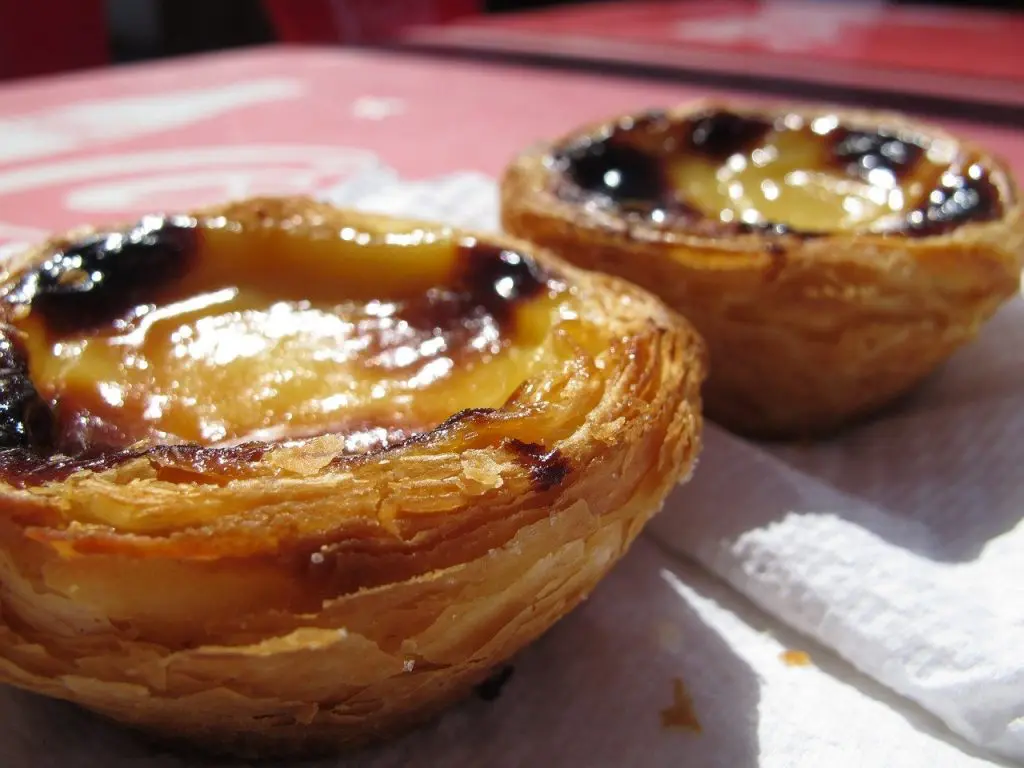
This miniature pie is a deep-fried pastry that is stuffed by several ingredients. The most common stuffing is shredded chicken, mozzarella, small shrimps, or ground beef.
If meaty stuffing is not your cup of tea then you can opt for sweet stuffing such as bananas, guava jam, or chocolate. The outer layer is thin and crispy and it is best served hot.
Feijoada
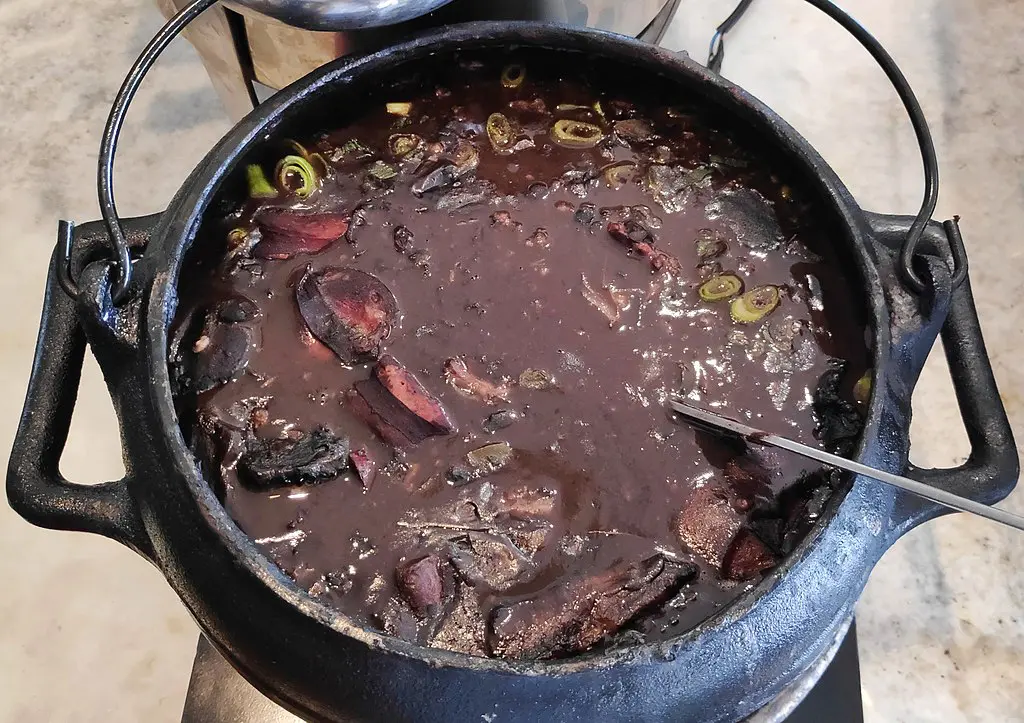
Feijoada is a Brazilian stew containing black beans, beef and pork that is simmered together in a large pot over low heat for several hours. This dish is popular throughout the Portuguese-speaking world and is considered a national dish of Brazil.
Typically, preparing Feijoada properly takes 24 hours. Plenty of work goes into soaking the beans and ensuring that the pork is desalted. It is considered to be a soul food and is commonly served alongside rice and cooked collard greens.
Brigadeiros
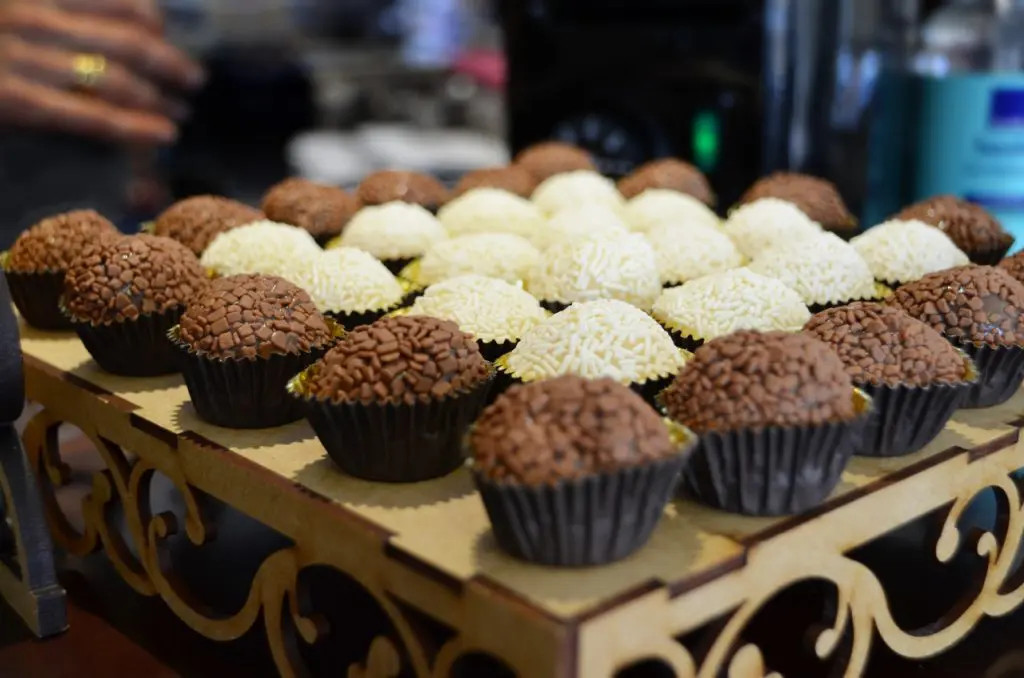
Brigadeiros are a sweet treat made using condensed milk, butter, and cocoa powder. Named after Brigadier Eduardo Gomes, a political figure in the 1940s, the Brigadeiros are specifically designed to give you an instant sugar high.
They are made by simmering cocoa powder and condensed milk and then whisking in some butter before shaping into desired balls and sprinkling with some sprinkles.
Moqueca
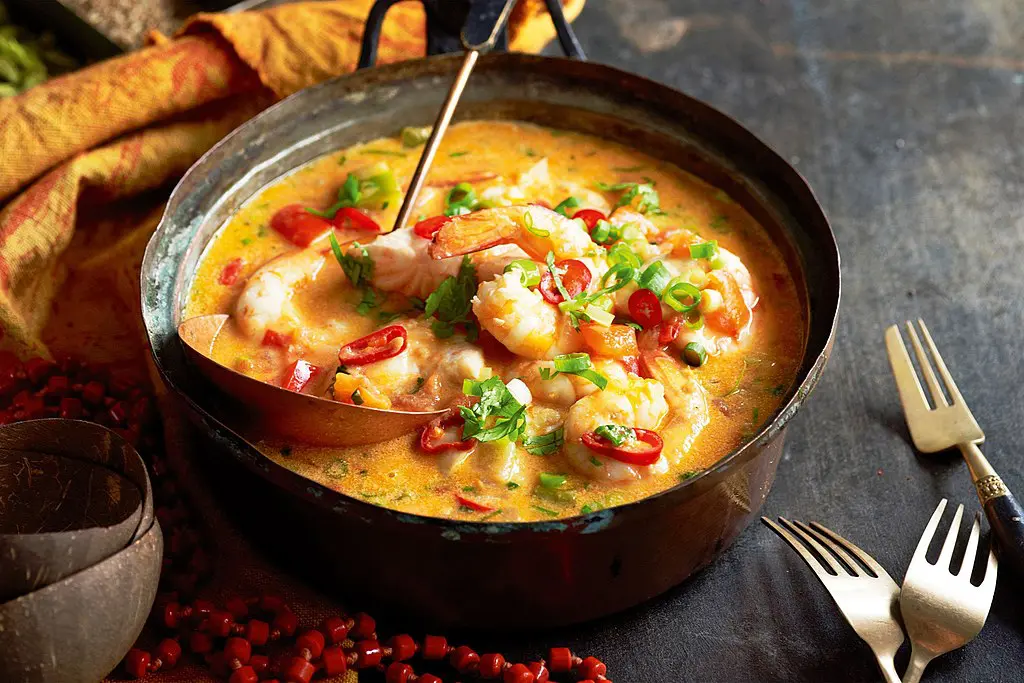
There are so many versions of Moqueca including Moqueca de camarao, Moqueca de Capixaba, and Moqueca de Baianos. The basic common ingredients regardless are fish and condensed milk.
Moqueca de capixaba has its origins from Espírito Santo and is prepared with lime juice, vegetables such as tomatoes, garlic, onions, and of course the main ingredient, the fish. It is accompanied by either white rice of pirão creamy manioc porridge.
The de Camaro version makes use of palm oil in addition to the coconut milk. It is best served sizzling hot in a clay pot.
Tacacá
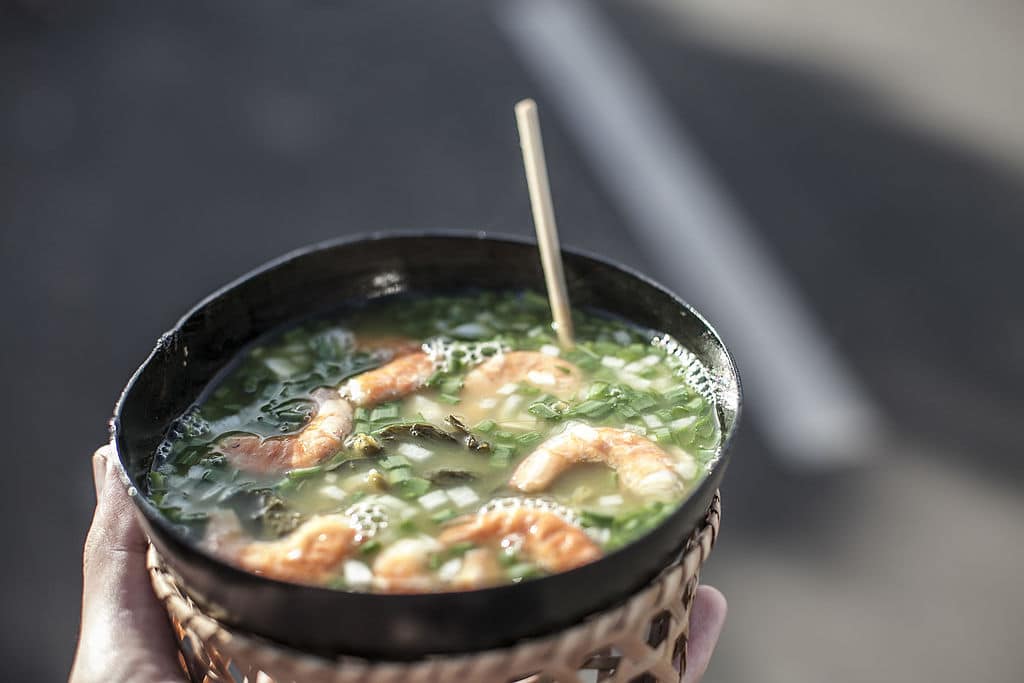
Fancy a mouth-numbing experience with an anesthetic-rich leaf? Try out Tacacá! Made with a wild cassava byproduct (tucupí), hot yellow peppers, wild Amazonian basil (alfavaca) and large dried shrimps.
To complete the list of ingredients, add in manioc starch and jambú (a leafy plant known for its anesthetic properties). Tacacá can be served with rice.
Carne-de-Sol
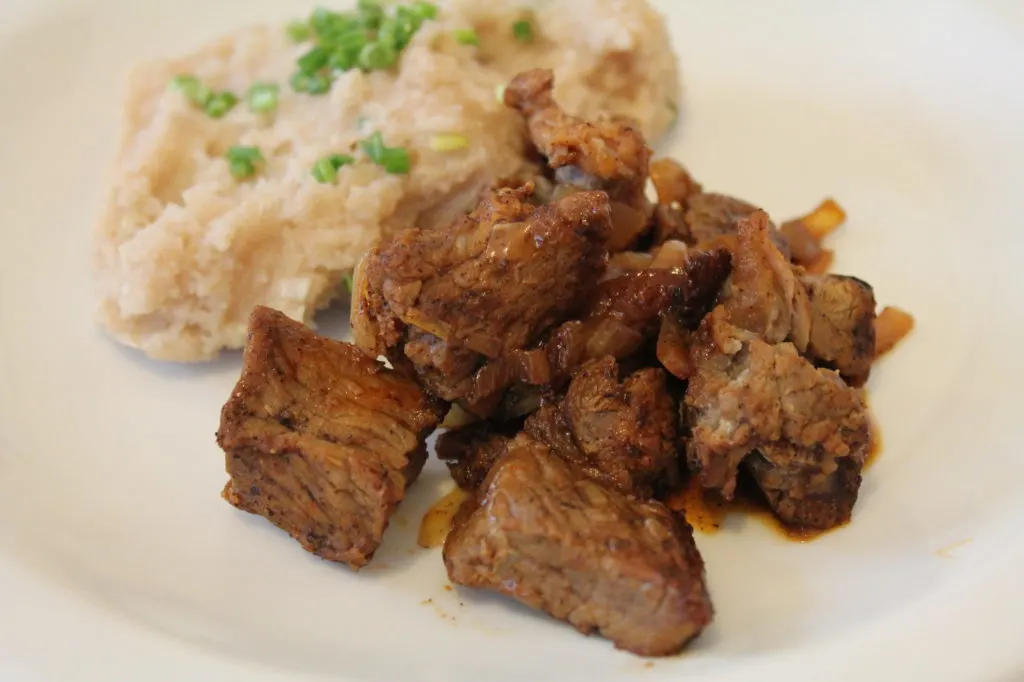
Carne-de-Sol is literally translated as ‘sun-dried meat’. Preserving meat using a method of salting and leaving in the sun was traditionally common practice in Northern Brazil.
However, most modern day carne-de-sol recipes no longer use the traditional sun drying method and simply use salt, brown sugar and time! This helps create a beautifully smooth textured piece of meat with a really strong, identifiable flavor.
Pamonha
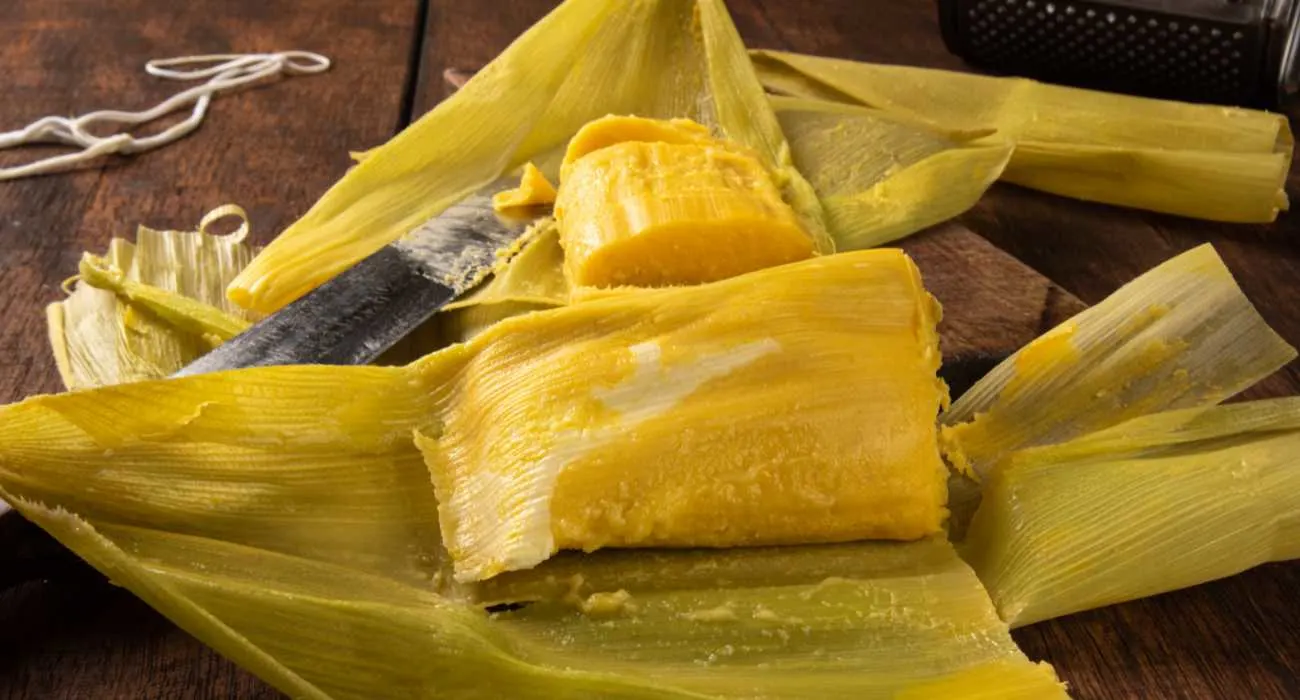
Pamonha is a snack made from freshly grated corn, crushed into a paste and then wrapped in a fresh husk of corn. It is then boiled or steamed to cook.
There are lots of variations on the popular dish, with the option to fill it with meat, make it sweet with milk or just eat it plain.
Cassava
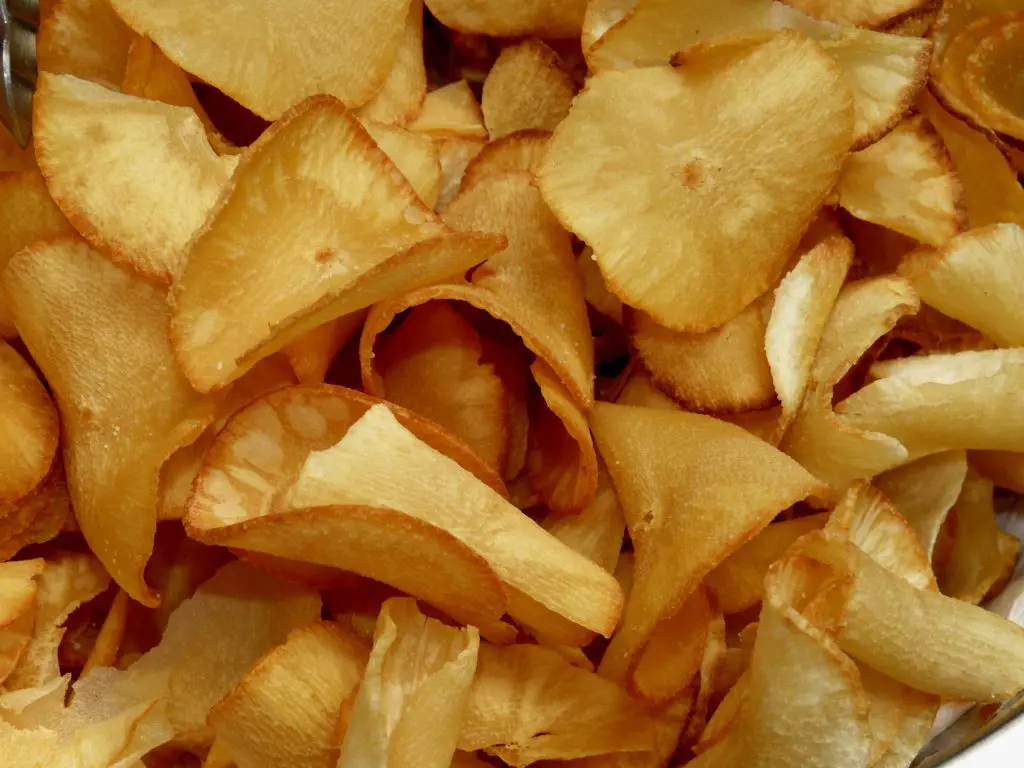
Cassava finds itself in one form or another in many Brazilian dishes. Whether it is steamed, mashed, boiled, fried, baked, grilled, or thrown into different stews, Cassava is a popular staple ingredient in Brazil.
It can be dried and turned into powder (Tapioca) or it can be cooked in its original solid form.
Common cassava-inspired foods include Farofa which is toasted cassava flour, Mandioca Frita which is fried cassava (a chips alternative), and Páo de queijo (the Brazilian “cheese” bread), among others.
Buchada de Bode
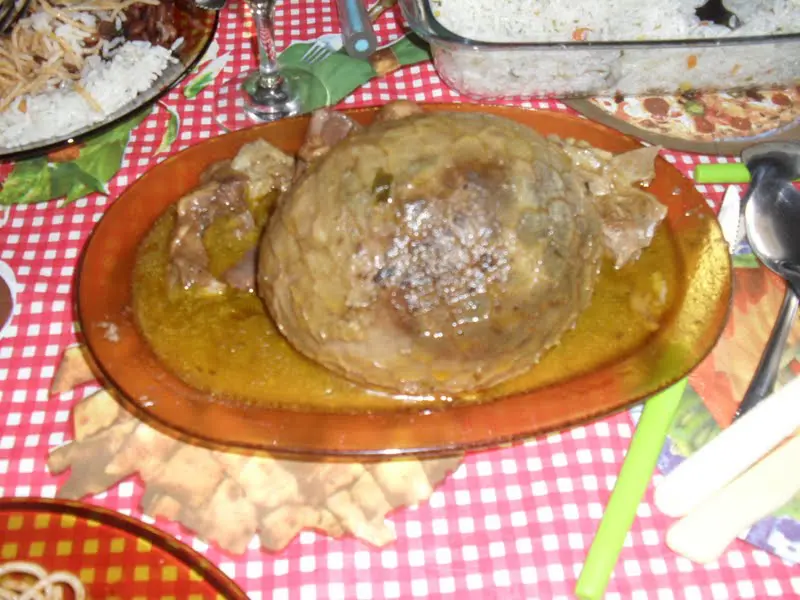
Ok this one of the weirder foods eaten by Brazilians but stay with us! Most commonly eaten in the Northeast of Brazil, Buchada de Bode takes the intestines of a kid goat and cooks them in its stomach lining, similar to haggis.
However, you might be surprised to learn that it’s actually incredibly delicious.
Churrasco
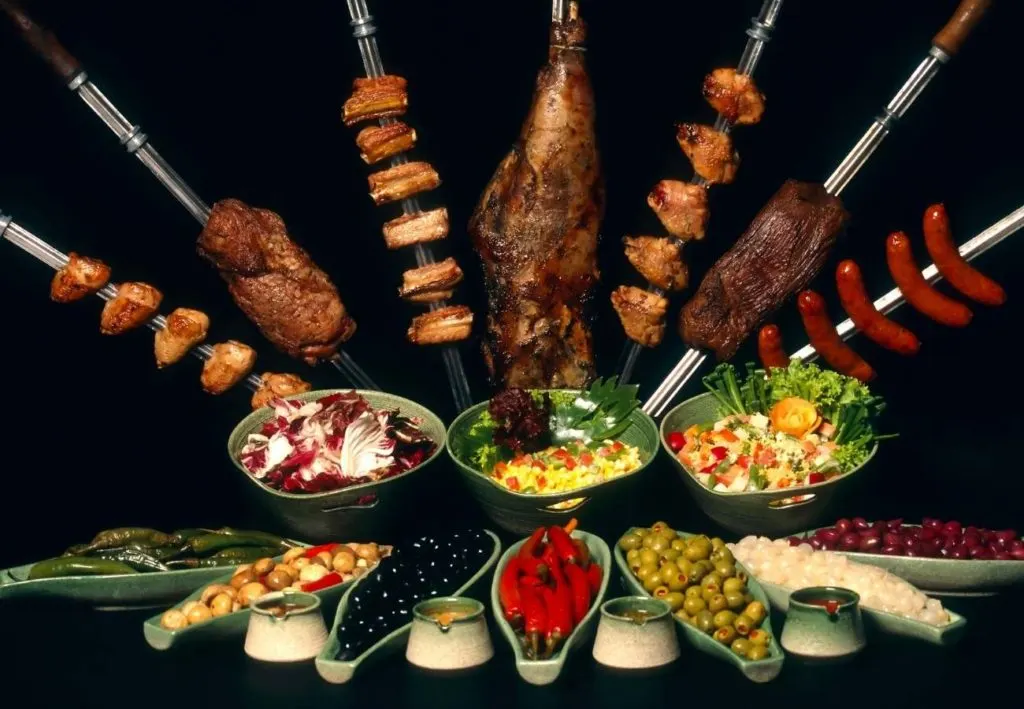
Churrasco is a traditional South American barbecue technique where chops of beef, veal, lamb, pork and chicken are skewered and then grilled over a wood fire. It is a very popular dish in Brazil but is also a widely followed cooking method in many other countries in North and South America.
The meat used to prepare churrasco in Brazil is often from the zebu, a breed of cattle that’s particularly common in churrasco as a cut of meat known as cupim. Foods that are served along with churrasco include farofa grains, rice, fried potatoes, potato salad, steamed greens, black beans, onions, fried bananas and many different chili-based sauces.
Acarajé
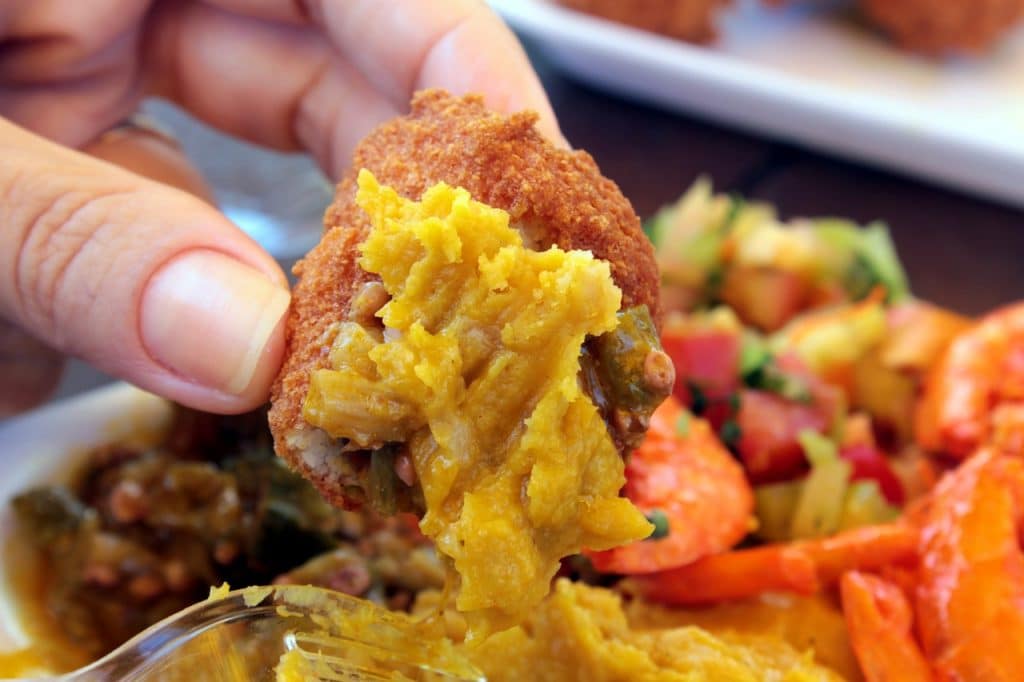
Acarajé is another popular street food. Black-eyed peas are peeled, formed into a ball, and deep-fried into fritters in palm oil (dendé). It may be stuffed with a spicy mix of shrimp or vegetables.
Coração de Galinha (Chicken Hearts)

Coração de Galinha, also known as Chicken Hearts, is a popular street food dish in Brazil. It consists of skewered and grilled chicken hearts, which are marinated in a mixture of spices and seasonings before cooking.
Baião-de-Dois
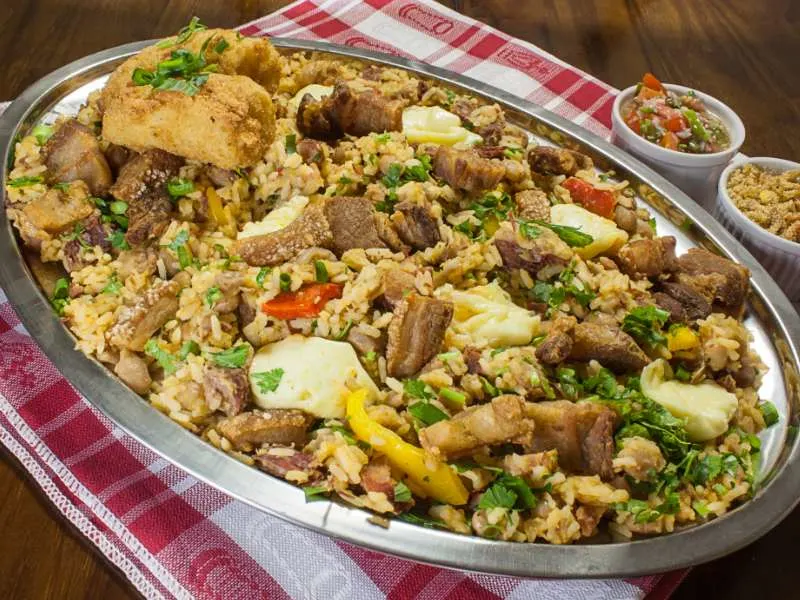
Baião-de-dois is a dish made with pan-fried onions and bacon, white rice, and black-eyed peas. This dish is simple and versatile and can be enjoyed any time of day. It is a great choice for a low-budget meal that does not sacrifice flavor.
Pudim de Leite
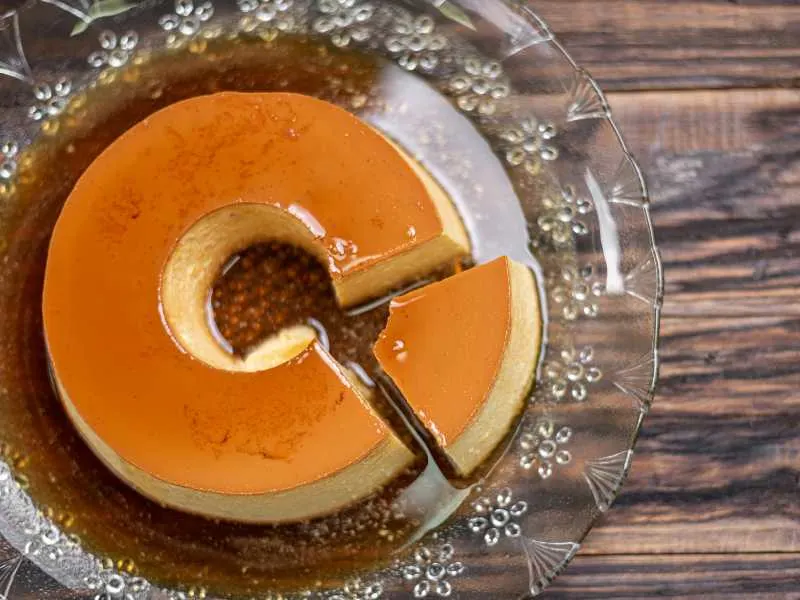
Pudim de Leite, also known as Brazilian Flan or Leche Asada in other Latin American countries, is a creamy, caramelized custard dessert made by combining sweetened condensed milk, regular milk, eggs and vanilla extract, which are then mixed together and baked in a water bath until set. The result is a smooth and velvety custard with a rich caramel sauce on top.
Guarapo (Sugarcane Juice)
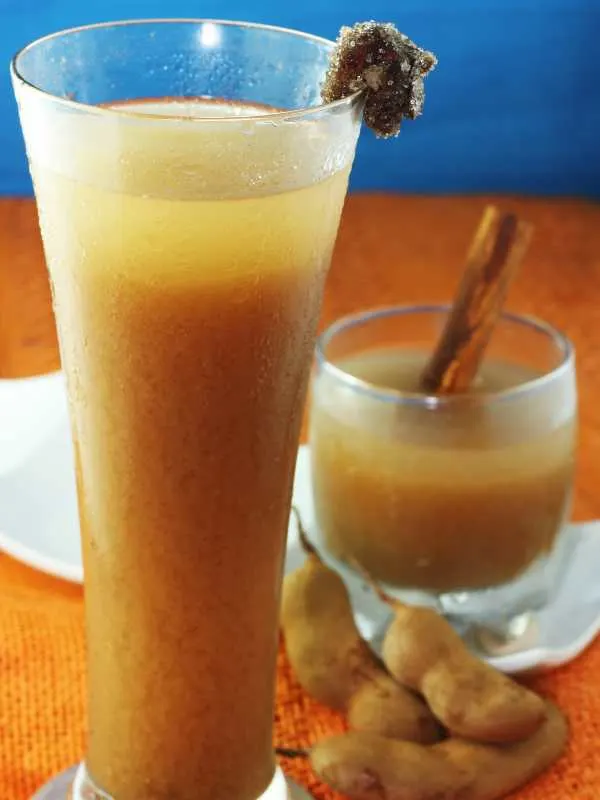
Guarapo is a traditional drink made from sugarcane juice enjoyed throughout Latin America. To make guarapo, fresh sugarcane stalks are crushed to extract the juice. The juice is then served as a natural, sweet and thirst-quenching drink. In some variations, guarapo is mixed with lime juice or served over ice for added flavor and coolness.
Olho de Sogra

Olho de Sogra is a confectionary consisting of a prune, stuffed with a sweet coconut filling which is then rolled in granulated sugar. The coconut filling is made using butter, coconut flakes and condensed milk which are cooked into a thick paste that can be molded once cooled.
Photo credit: BR
Beijinho
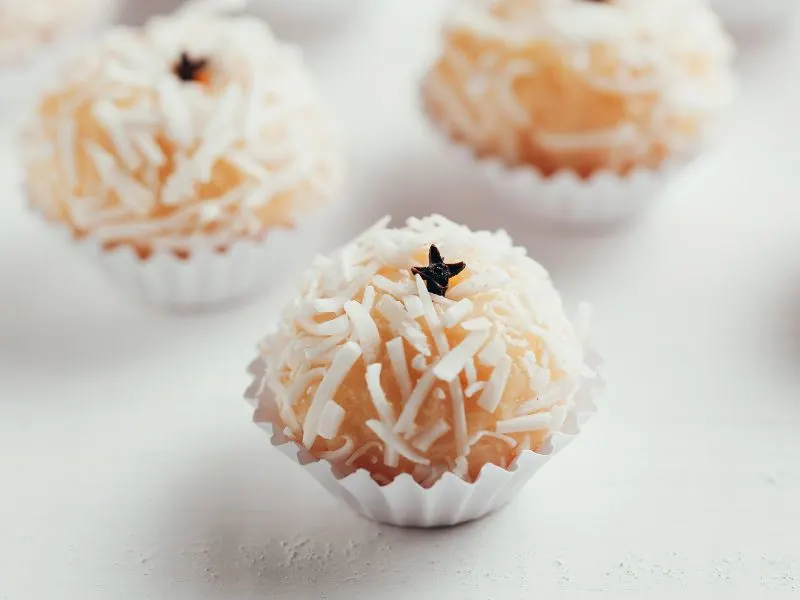
Beijinho is a bite-sized sweet treat made using coconut and condensed milk. Commonly eaten at celebrations and festivities across the country, Beijinho is known as a ‘birthday candy’ and comes in many different varieties. Traditionally it is coconut flavor but chocolate, nuts, and even liquors are also used to make variations of Beijinho.

